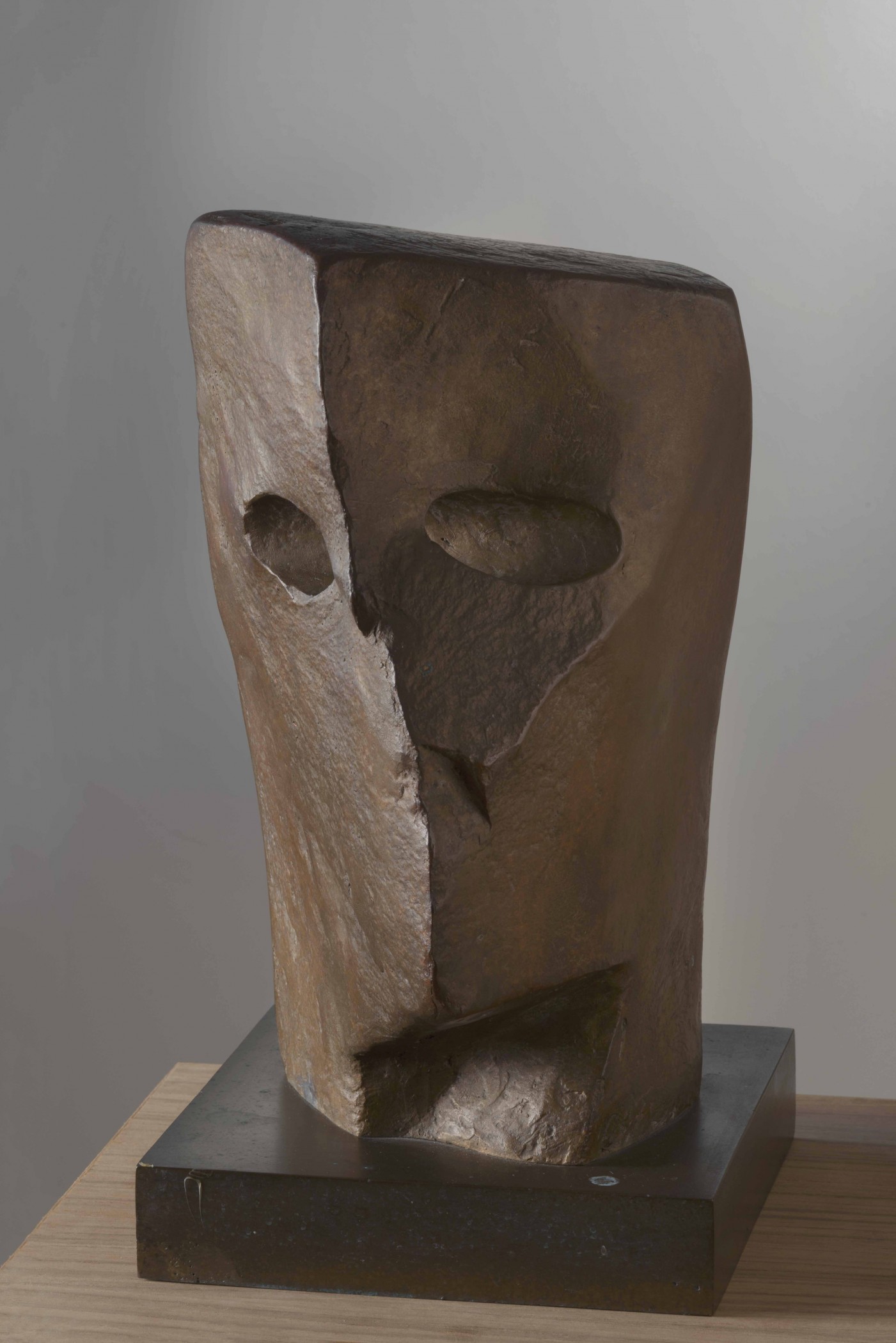Veronika van Eyck
(München 1936 - 2001 München)
Head, 2-6
bronze, 35 x 19 cm (13.78 x 7.48 inches)
Re: 861
Provenance: Private collection, Milan
Percorso della scultura. Veronika van Eyck, Milan, December 1988 . January 1989
Veronika van Eyck, Salamon, no. 6, Milan, September 2006
She was born in Munich in 1936, Veronika initially studied in her hometown and later at the Kunstewrbeschule in Zurich. Moving to Milan in 1955, she attended the Brera Academy of Fine Arts, coming into close contact with Marino Marini and Giacomo Manzù. Her first solo exhibition was in 1959, in that same year she exhibited her works at the Bianchini Gallery in New York. From this date, a very long series of solo exhibitions and participation in group shows alternated, both in Italy and in various countries of German culture. In 1970 she was invited to the International Biennial of Carrara, an event of fundamental importance for the sculptor, who precisely on that occasion discovered the varied potential of marble and stone. From then on, the artist regularly spent a few months a year in the Tuscan town.
This is my first exhibition in Milan in six years. My silence has several causes. First, I learned how to work stone, and it cost me years to understand how to carve marble. It was not just a technical problem. Since I was a child I had been working, starting from a iron wire, on which I would attach clay, wire mesh or plaster: that is, starting from scratch I would create a volume. One day I found myself with marble blocks, and I had to learn to "invent" my work no longer starting from an iron wire, developing from the inside out, but vice versa. I broke tons of marble, reducing them to dust, to no avail. Another reason, why I have not done more solo exhibitions in Italy, (although I have participated in group exhibitions) is, that I have done exhibitions in Germany, Switzerland and Liechtenstein. I found in these countries a very attentive audience. People who come back two, three times and maybe stay an hour or two to see my works. People, and quite a few who say, "come to my house to choose the place to put your work." I found a real interest in sculpture, and that helped me to believe again that being an artist still makes sense. Because along the way I had come to doubt that art today was out of time.You work for years by yourself, one day you decide to have an exhibition, dusting off the sculptures, have bases made, organize a crane and a truck and so on. At the opening two/three hundred people come and tell you, "good job," and after a couple of weeks you take the works back to the studio.nI wanted to do a profession that was more inserted in today's world, so I started to be a journalist. I wanted to talk to people about people, I wanted to talk about current issues. I worked for German television, I was a reporter for three radio stations, I wrote, and I still write, for newspapers. I never write about art, I write about social problems, women, children, the hospital system, the condition of human life. One day I convinced Frankfurt television to let me make a film about Carrara, quarries, sawmills; a film about workers and occupational diseases. One morning at five o'clock I saw the sun come up behind the Apuan Alps, and I didn't care about the film anymore. I went to the quarries and bought a whole truckload of marble. I went to Volterra to look for alabaster, and I found the selena stone that the Etruscans worked. I went back to sculpting, and I realized that I can't leave sculpting because I love it, and that I will continue to do journalism because it helps me stay anchored in the reality of everyday life.
Milan, March 1976
Veronika van Eyck

